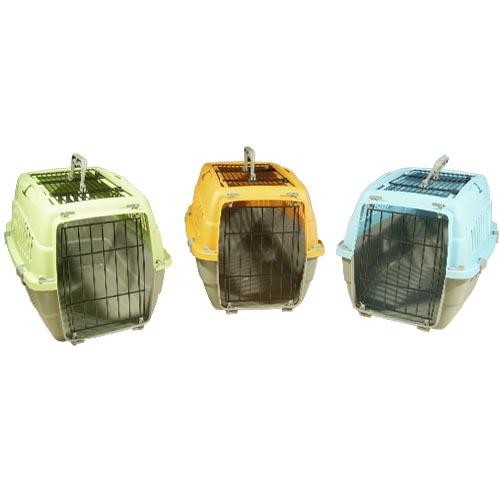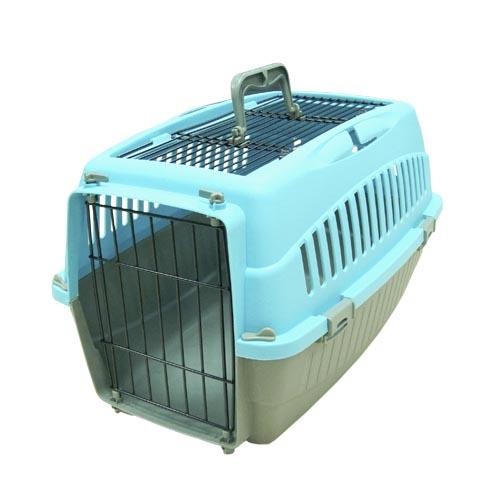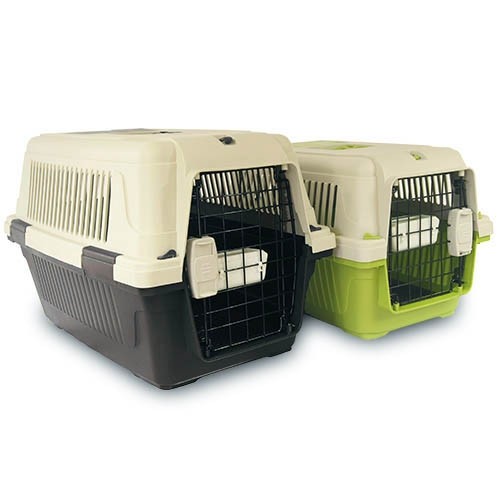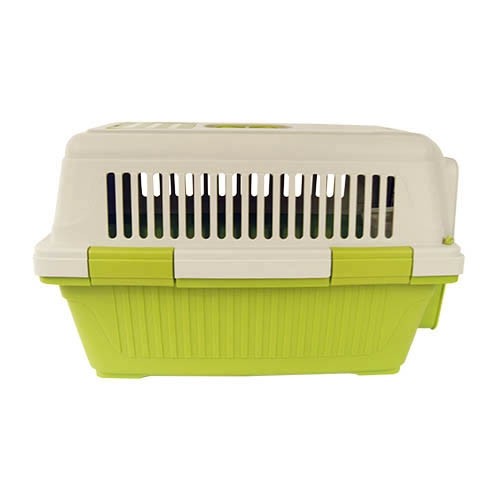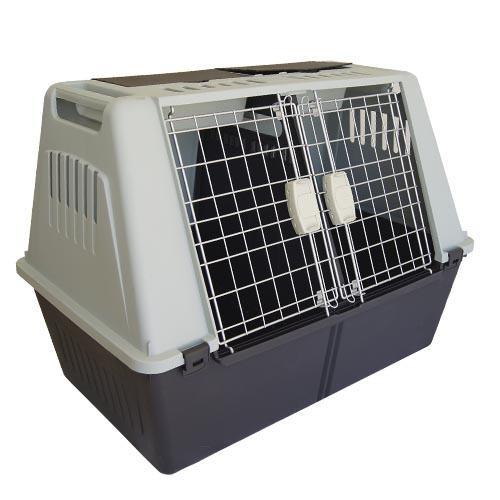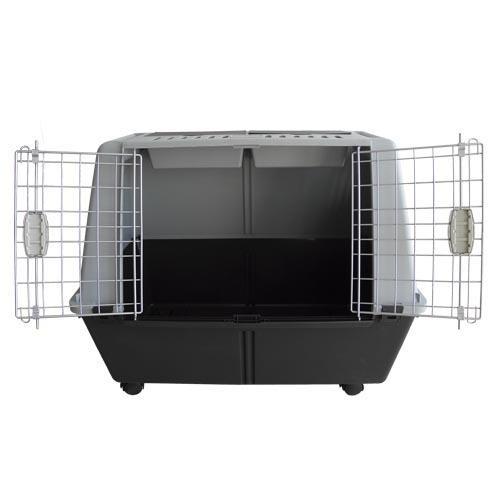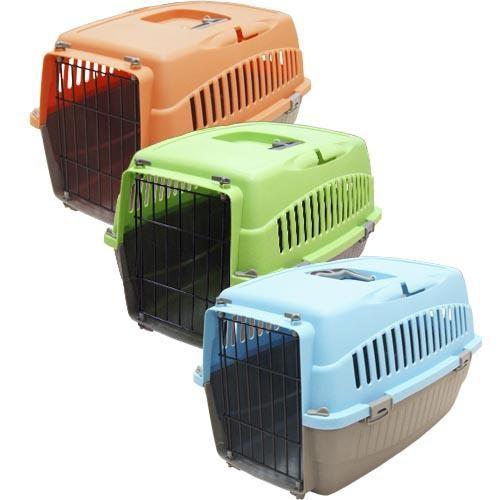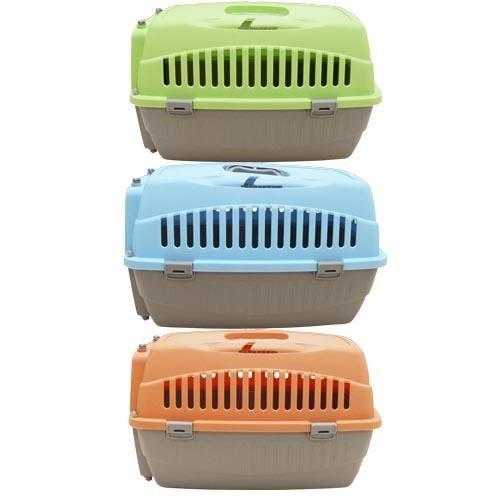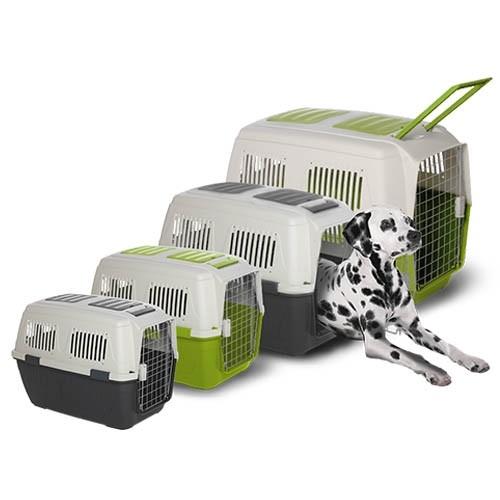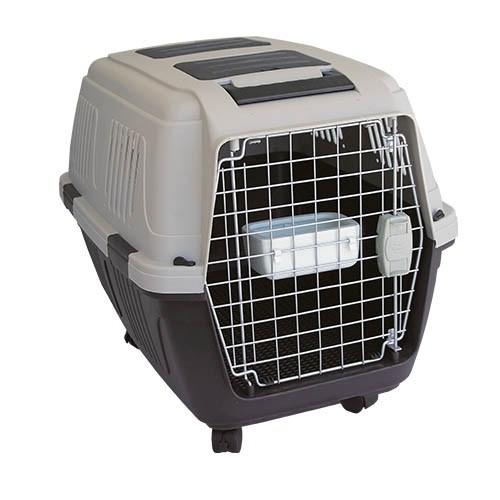Vari kennel, Plastics & IATA Aircraft
Choosing the right Transport cage is essential!
The dog in a plane
air transport regulations
By plane, the transport of any living animal is regulated in a precise and rigorous way according to the species in question. The dog is also protected by the European Convention of 13 November 1987 relating to the protection of companion animals, which states that "no one should cause unnecessary pain, suffering or anguish to a pet". / p>
In addition, European convention number 65 on the protection of animals during international transport, which entered into force on December 13, 1968, then revised by the Member States on November 7, 1989, indicates the bases to be observed during animal transport. in order to ensure the safety, health and well-being of the animal during the trip. Chapter IV of this convention deals with the transport of dogs and specifies that:
- pregnant female dogs having to give birth during the transport period, or those whose parturition dates less than 48 hours, are unfit for travel;
- the cage must be spacious enough to allow the dog to lie down; it must withstand bad weather and be ventilated; it must contain a litter or any other means capable of absorbing the droppings;
- the routing must be as fast as possible, as well as the connections or stopovers; each dog should be fed every 24 hours and watered every 12 hours at a minimum.
These provisions are considered valid for any form of dog transport, regardless of the route of transport.
At the strictly air level, the international regulations for the transport of live animals are drawn up and published each year by the International Air Transport Association (I.A.T.A.: International Aerial Transport Association), and correspond to appendix A of resolution I.A.T.A. 620.
Important points to ensure
The handler of the dog who is going to travel by air must respect the regulations and, in particular, ensure the following points:
- check the acceptance of the dog by the airline company, confirm the itinerary, reserve the place of the animal and fill in a form called "shipper's declaration";
- find out about the travel arrangements and any rules specific to the air carrier requested;
- obtain information from the consulate or the appropriate authorities on government measures, in particular health, of the nations of origin, destination, and transit if applicable;
- obtain the required national documents, veterinary certificates of vaccination and good health, as well as any other special attestation or exemption required by certain countries of transit or arrival, such as exceptional import permits;
- use a properly labeled container, and above all complies with I.A.T.A. regulations, allowing the animal to lie down at least;
- Properly prepare the dog for this expedition in order to prevent any dehydration or under-nourishment, and to minimize the stress felt by the dog.
By following these rules correctly, the expedition cannot be accused of breaking the law in any way.
The transporter must take into account the following elements before accepting dog freight:
- all the morphological and physiological characteristics of the dog (notion of increased risk for certain breeds - brachycephalic or physiological states - gestation);
- the conformity of the container used, its cleanliness, its safety both for the dog and for people prepared for handling;
- the type of aircraft allowing such transport and the space required in the hold or cabin;
- minimum waiting times for the dog, on departure or on arrival;
- the presence of the required documents correctly completed, reservation, declaration by the shipper, health certificates
As soon as the carrier has complied with these various instructions and, despite everything, the dog is lost, ill, injured or even died naturally or accidentally during one of the phases of the trip, the owner is warned that the carrier cannot to be held responsible.
Preparation for the trip
I.A.T.A. regulations indicates not only global and theoretical measures, as mentioned previously, but also a set of more specific and practical elements, which each company must advise the owner of the dog in order to optimize the conditions of transport of the animal (s) .
Thus, the space provided for the dog, whether in the cabin, on the way, or in cargo, must be reserved and paid for in advance. The difference between these three modes of air transport is inherent in the size of the dog, the price of the ticket, the qualitative importance of the animal and the veterinary checks on reception of the flight: dogs traveling in the cabin or in the hold are considered as baggage, with a higher cost but a guaranteed reservation and a more flexible veterinary check on arrival.
During a cargo trip of several dogs, the presence of an accompanying person is authorized, as long as this does not go against government provisions or company regulations.
Finally, if the dog's journey requires several carriers, it will only be accepted when each of them has confirmed their ability to transport the dog on the planned route. Therefore, the initial carrier must communicate the following information to the following company (s):
- the Air Waybill (L.T.A.) number listed on the live animal shipper's declaration;
- the number, weight and dimensions of each container if more than one dog is involved;
- the names of the departure, stopover, and arrival airports;
- the date of shipment;
- the names, address and telephone number of the sender and the recipient if they are two different people;
- equipment required for unloading at destination;
- where appropriate, the care to be given to the animals and the instructions for the supply of water and food.
Image 74812
Airlines with specific restrictions under IATA regulations
Image 74813
Sedation and securing of the dog
It is extremely dangerous to administer sedatives to dogs before air transport: sedatives decrease their resistance to stress, and, on the other hand, a sedated dog is always likely to react in an unpredictable way, especially in the midst of flight. The administration of tranquilizers will therefore be totally discouraged, except in extreme cases determined by a veterinarian (very aggressive dog or paralyzed by fear). For any tranquilized dog, a detailed note will be attached to the container (generic name of the sedative, dosage used, route and time of administration).
.Sort by
Filters


